Growing up, my parents had a full unfinished basement, and my mom saved a large box for each elementary grade level—one for my sister and one for me. My parents had the space to do that, which worked for them. And in the last ten years, my mom has asked that I go through the boxes on periodic visits to my childhood home to see what I wanted to keep. I’ll be honest; for the most part, there wasn’t much I wanted to save. But it was fun to walk down memory lane and see the work I did in elementary school—the stories I wrote and other art projects (including a weird-looking mask of my face, made from clay).
In my home now, we have the space to be able to save more schoolwork than I do, but I have taken a sort of minimalist approach—for better or for worse. Sometimes I feel guilty throwing papers away, knowing how much time and effort they put into them. But also, I know I can’t (or don’t want to?) save everything, and I ask myself: Will my son care to see this math worksheet in 20 years? Will I?
My two oldest kids started school last week and have already started bringing home papers. My daughter brought home a poem with her handprint about her first day of kindergarten and my son had a math worksheet from the first day of second grade.
After a summer of random workbook and coloring pages, it’s been months since I’ve had to decide what to do with the kids’ schoolwork.
Now, it’s back to choosing—what to keep and what to toss.
Daily Routine
When my kids walk in the door, they (are supposed to) hang up backpacks and wash their hands. I usually take this time to open their bags, see if there are any notes from their teachers I need to read, and see what schoolwork they brought home. I pull any letters from their teachers and put them on my desk, then the rest the stack on the Hoosier cabinet in our dining room. During dinner, we have the papers handy to start conversations about what they did at school that day.
This space acts as an intermediary between what to keep and what to toss. In reality, the papers often sit here for a few days until I either recycle them or store them. Since I leave them out for a few days, I can look at them a couple of times before tossing them (which makes me feel less guilty than if I trash them the day they come home).
Short-Term Keeps
My oldest is a saver; he likes to keep any random object he finds. This morning, I found a glass jar filled with some seeds (Hello, farm kid!) that he slept with all night. Because of his personality, my husband thought it would help our son to save most of his paperwork (at least for the moment), and then we would deal with it later. This saved some tears when he thought we were throwing away all of the schoolwork he wanted to keep.
My husband picked up this wooden crate from Walmart when our son was in kindergarten, and he keeps it in his bedroom. Last year, during first grade, he came home with many papers. Each day, my son tossed anything he wanted to keep (which was usually everything) into the crate during the school week. When the crate started to get full every few months, I went through it when he wasn’t around and tossed a bunch of them—like math worksheets and his weekly spelling tests. And truthfully, he never noticed or said anything when the papers “disappeared” from his crate periodically.
My daughter doesn’t tend to be the saver that my son is, but now that she is in school full-time, that might change. If so, she will get a crate too.
I let the kids determine what goes on the fridge, and I’ll keep it there until it falls off or gets replaced by their next favorite drawing. For now, this works for us, as they don’t request every piece of paper to go on the refrigerator. And sometimes, the artwork on the fridge goes to the recycling bin after being displayed, as it’s not something I want to keep long-term.
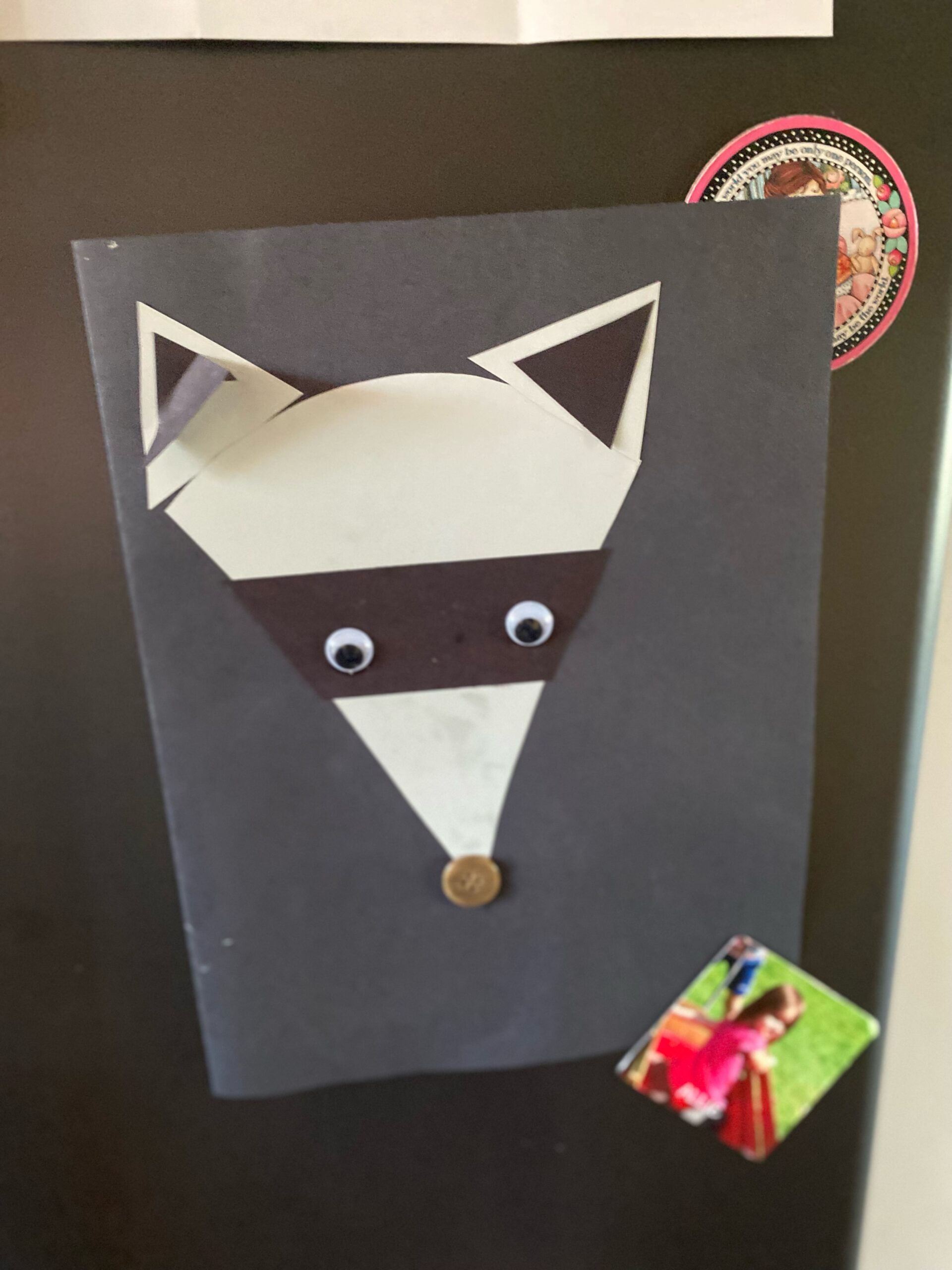
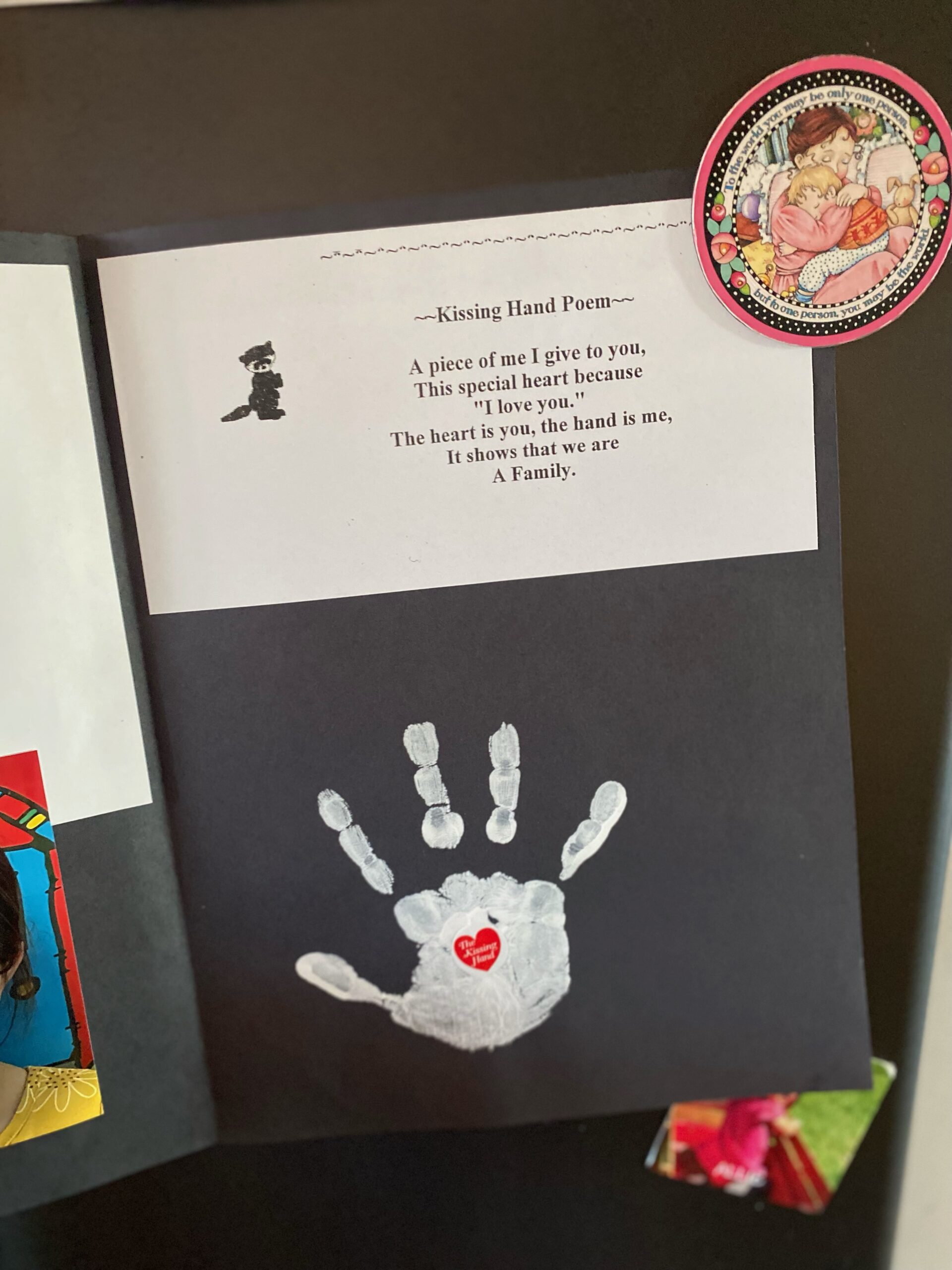
Choosing the Keepers
For every mom, it’s going to be different on what we choose to save or not. I’m a sucker for anything with their handprints (see above); it feels like a time capsule into how little they are. I try to save at least one piece of artwork where they’ve written their name because I love seeing how it improves from year to year (and from the beginning of the year to the end!). I rarely save worksheets (math, science, etc.). If I pull something out of their backpack and it immediately makes me smile—like it’s a true representation of my kid’s personality—I save it.
I collect a handful of drawings of our family, especially the ones where the scale is completely off and I look like a giant—those are my favorites. My son is now writing short stories, and I will keep a few, especially the ones that are completely ridiculous. It might sound cheesy, but I want to feel something—pride, warm fuzzies, delight—in order to keep it. Whenever I’m on the fence about something, I’ll save it—knowing I can toss it later.
Generally, I pull my favorite artwork to store before my son puts it in his crate. I do this because I want to make sure it doesn’t A) get thrown away on accident or B) that a certain toddler roaming the house doesn’t destroy it first.
But, as I’m writing this, I wonder if it would be better to enjoy my favorite pieces on the fridge first, then put them into the “keep” folder later. Maybe something new to try this school year!
Storing & Organizing Keepsakes
When my son started Pre-K a few years ago, I bought these keepsake portfolios from Lakeshore (and later bought two more, knowing I would eventually have three kids in school). Throughout the week, I sort through the papers on the Hoosier, deciding which ones to keep or toss. Then I slip the “keepers” into each kid’s portfolio and bury the “toss” ones in the recycling bin where the kids can’t see them. I use the same folder for artwork and schoolwork; I don’t keep anything separate.
Occasionally, I take a picture of a special piece of artwork on my phone and include that photo in our annual family album. That’s not a practice I do regularly, more so if it would be an awkward piece of construction paper to try and save in the portfolio.
At the end of the school year, I get out the keepsake portfolios and go through what I’ve saved. Sometimes I’ll toss one or two things that I no longer feel are “keepers” based on other items I’ve collected through the school year. Giving myself this limited space (versus a whole box) makes me consider what I deem a “keeper.”
My kids are still early in their school careers, and we have many years ahead. Things might look different in a few years, but this system works for us now.
I remind myself that saving everything won’t keep them little forever. I know I won’t lose all my memories of these years just because I don’t keep every worksheet, drawing, or scrap of paper they write their name on. And I love the timestamp the few precious pieces I save give me.
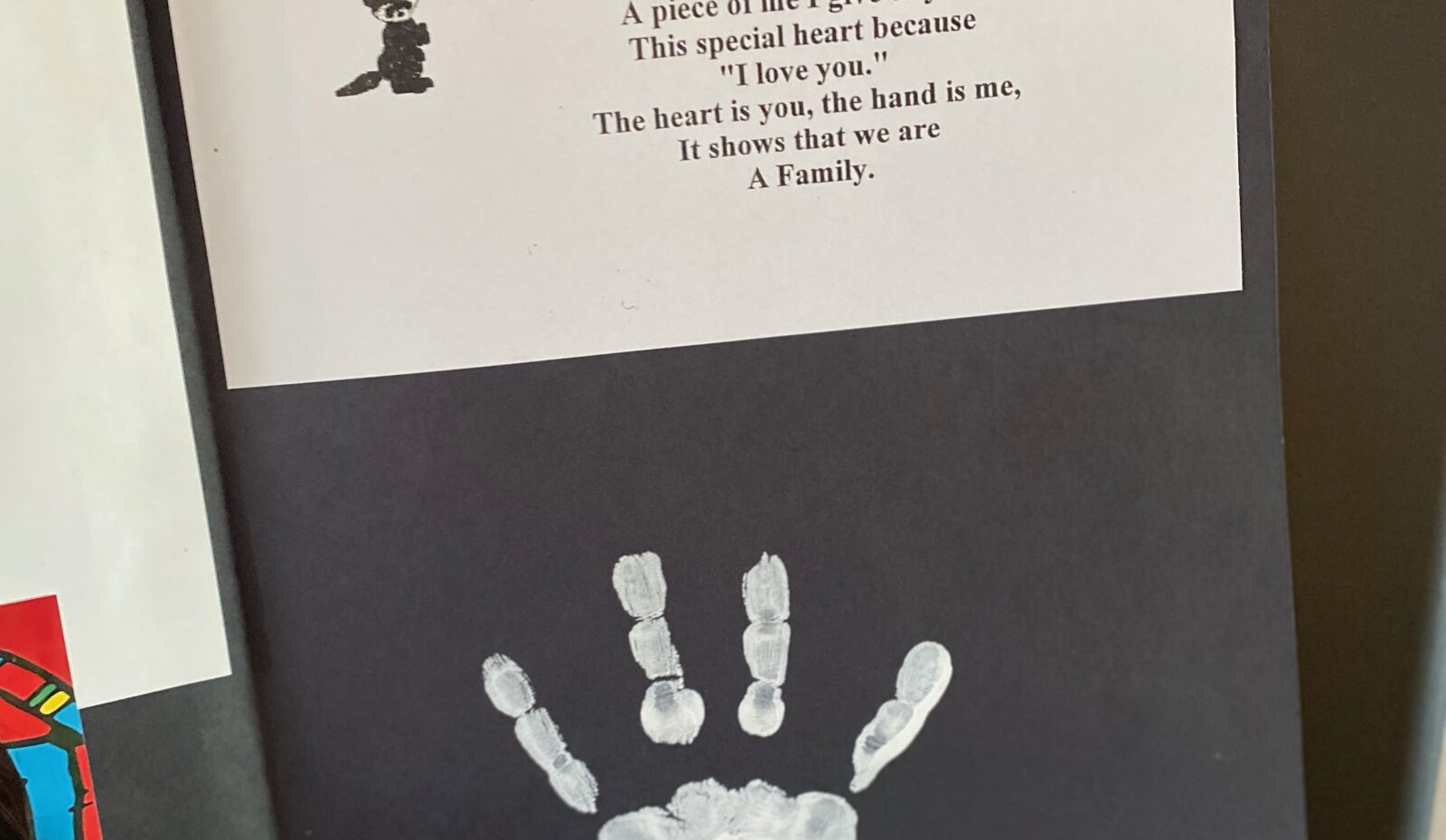

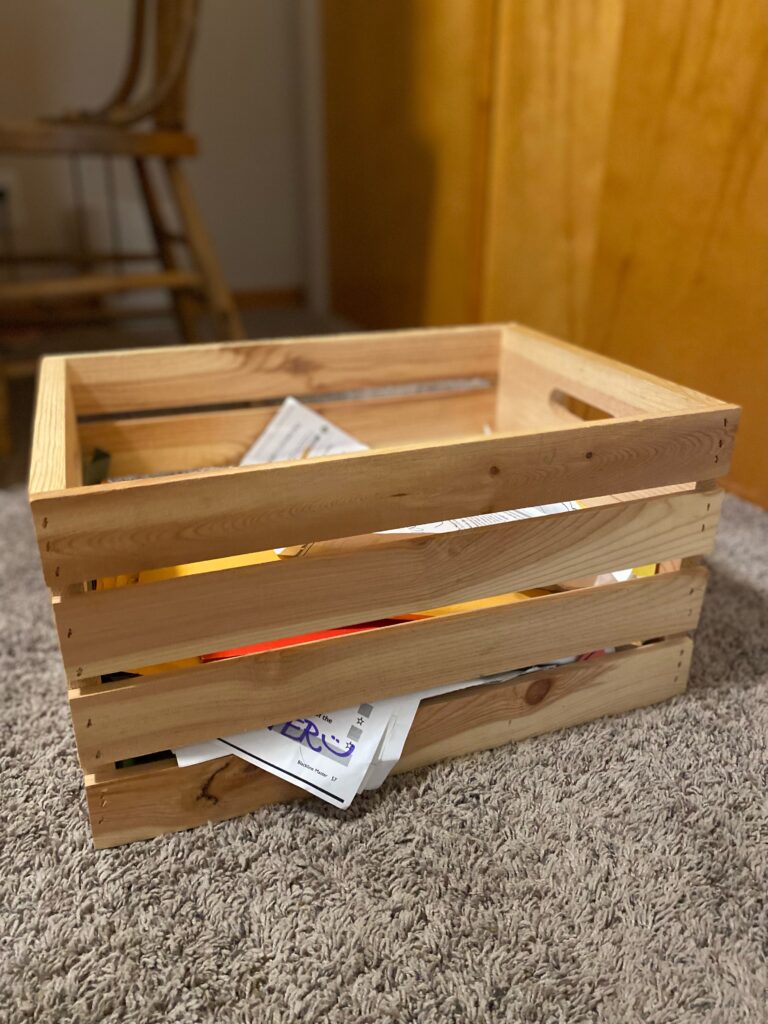
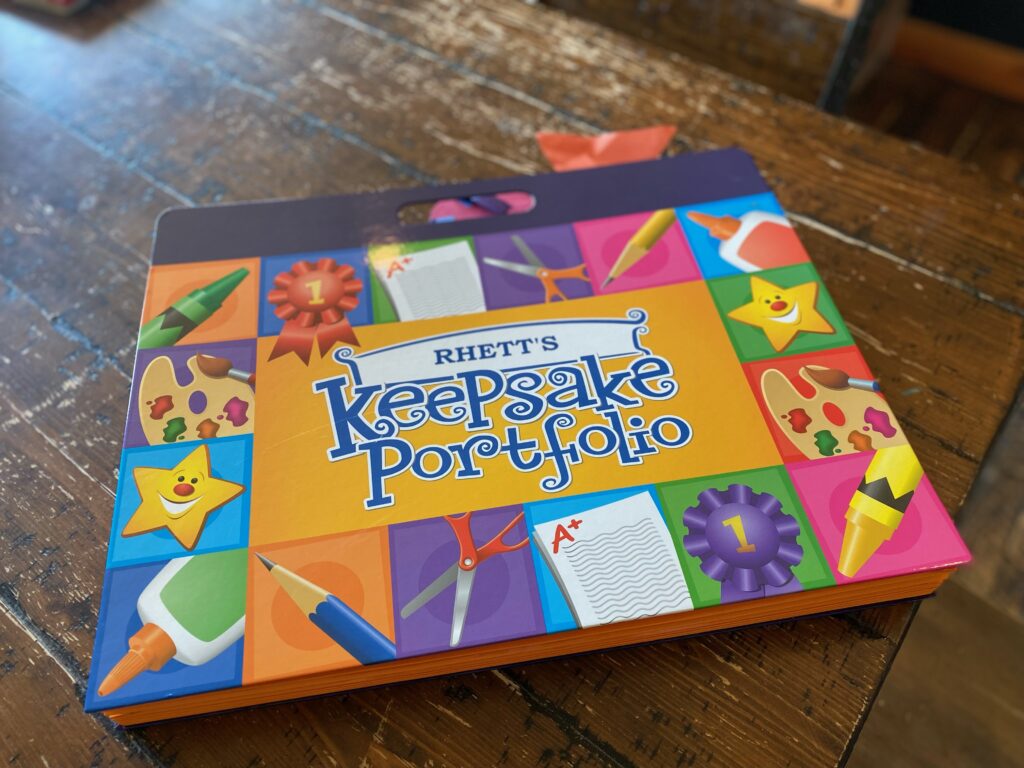


Leave a Reply